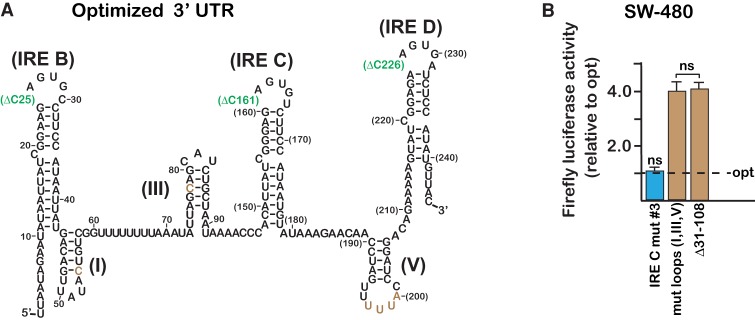FIGURE 3.
The proposed miR-7-5p binding site has no significant effect in the context of the TfR1 3′-UTR that had been optimized for instability. (A) Deletion of the 5′ C within each IRE hairpin loop (green) eliminates potential complications arising from IRP interactions and variations in iron-responsive protection. Brown, sites of point mutations within the three non-IRE hairpin loops that were earlier demonstrated to impede degradation. (B) IRE C mut #3 (Fig. 2A) in the context of the optimized 3′-UTR (opt) has no significant impact on the assay (ns, P > 0.1). Combined mutations (C54G, 81–82 GU and 197–200 AAAC) to the three non-IRE hairpin loops (I, III, and V) negate iron-responsiveness in SW480 cells to the same extent as the Δ31–108 mutation, which was earlier demonstrated to prevent iron-responsive degradation in the mouse L-M cells mRNA (see mutation pTR-82 in Mullner and Kuhn 1988 and Δ31–108 in Rupani and Connell 2016). Luciferase was measured after 14 h treatment with FAC. All error bars represent ±SEM of three biological replicates.

